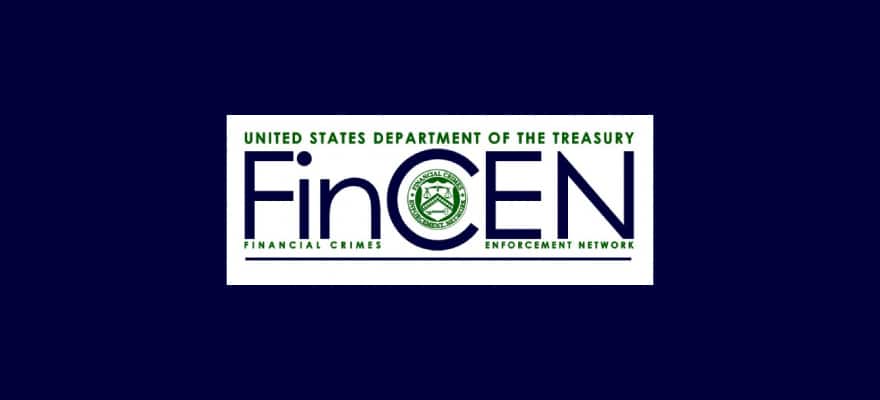There is no recent fintech concept that has taken root in the banking community quite like the stablecoin.
Of all the technical innovations brought forth by the invention of Bitcoin, this has succeeded in capturing the greatest attention of powerful financial leaders across the globe.
This is perhaps because of its architecture, which is designed to provide stability and therefore minimises monetary volatility. This, after all, is the stated mission of the central bank.
In a February 2020 speech, Sir John Cunliffe, the Deputy Governor of the Bank of England, makes this point: “Money, like electricity and water, is crucial to the operation of modern society. Our job is to ensure it works safely and reliably, through ups and downs, so that everyone in society can depend upon it. That means ensuring its value can be depended upon.”
While Bitcoin as peer-to-peer electronic cash was specifically designed to evade banks and bankers and bypass the need for these middlemen to exist at all, a stablecoin at its core does not pose the same explicit existential threat. That is not to say that there are not risks, of course. But, you get my point.
Central bankers of all stripes now agree that stablecoins will radically alter the Payments landscape. At the European Central Bank, for example, executive board member and noted Italian economist, Fabio Panetta believes that: “Global stablecoins could drive further innovation in payments, responding to the need for cross-border payments and remittances that are more efficient and cheaper.”
And over in the US, we have just seen a slew of guidance from the national bank regulator, the Office of the Comptroller of the Currency (OCC), which not only allows banks to custody crypto assets for their clients but now says regulated bank entities can use stablecoins to settle cross border payments, participate as nodes in Blockchain networks to help verify transactions and even issue their own stablecoins. That last bombshell news came in the form of Interpretive Letter 1174, by the way.
Leading that agency for the moment (and due to step down any day now, according to multiple reports) is Brian Brooks. It will not be lost on the eagle-eyed among you that Brooks is a poacher-turned-gamekeeper.
Before taking up the role as acting Head of the OCC in May 2020, he was Chief Legal Counsel for the San Francisco crypto exchange Coinbase. And of course, since 2016 Coinbase has been operating its own US dollar-backed stablecoin: the USDC.
The Result
As we have seen many times before, regulatory certainty in a particular sector almost always leads to greater investment. Companies can conduct their business without fear of inadvertently falling foul of uncertainty or grey areas.
As such, institutional ‘exposure’ to Bitcoin no longer takes on the double meaning of intense vulnerability.
So, it has been no surprise at all in the past six months to see the world’s richest asset managers piling into the cryptocurrency in ever greater amounts.
The MassMutual Life Insurance Fund was one of the first institutional investors over the top as it added a $100m Bitcoin purchase in December 2020. This was enough to attract the attention of JP Morgan, whose analysts wrote in a client note that this move represented “another milestone in Bitcoin adoption. One can see the potential demand that could arise over the coming years as other insurance companies and pension funds follow MassMutual’s example.”
And according to Bloomberg, the investment unit of banking giant, Morgan Stanley recently upped its stake in Microstrategy, the business intelligence software giant which has added over $1trn in Bitcoin to its balance sheet.
Staying STABLE
In general, the OCC’s friendly disposition to stablecoins and cryptocurrencies has produced some significant pushback from American lawmakers. The clearest opposition to the Brian Brooks tenure comes in the form of a draft piece of legislation unveiled on 2 December 2020 by three US Democrats: the STABLE Act.
One of the three co-sponsors, Massachusetts Congressman, Stephen Lynch argued: “We cannot outsource the issuance of American currency to private entities, and the STABLE Act guarantees that our regulators will be able to effectively oversee the application of this new technology.”
While it is nowhere near guaranteed that the STABLE Act will come into force, it is fairly clear what fears these lawmakers are expressing.
It is the same distrust of ‘private entities’ that we saw in 2019 when stablecoin issuer Tether admitted USDT was not backed 1:1 against USD reserves, and again when Facebook faced a regulatory firestorm in announcing its Libra global stablecoin.
This bill mandates that stablecoin issuers must obtain a US banking charter, and it would force stablecoin reserves to be regulated like traditional bank deposits. All stablecoin holders should be subject to Know Your Customer (KYC) identification, it adds.
That point about stablecoin reserves being regulated like bank deposits is key.

Maxim Bederov, Investor and Entrepreneur.
If we switch back to Fabio Panetta for a moment, he can tell us exactly why. “In the case of bank deposits, one-to-one convertibility to the fiat currency is safeguarded by deposit insurance schemes and prudential regulation and supervision.”
“If the issuer does not guarantee a fixed value, the price of the stablecoin will vary with the value of the reserve assets, and a [bank] run could occur whenever users — who bear all the risks — expect a decrease in the redemption price of the stablecoin.”
Legislation like the STABLE Act would end implicit support for private tech firms like Tether to control a vast amount of money supply.
After all, they act as central banks, but in Tether’s case without true 1:1 convertibility and in all other cases without the safety fence of deposit insurance. Neither are there specific liquidity requirements like the Tier 1 capital ratios imposed on banks by the 2009 Basel III accord.
Elsewhere in the world, central banks are aiming to tighten their grip on stablecoin issuance. China, for example, announced draft laws in October 2020 which would ban privately-controlled yuan-linked stablecoins and make the People’s Bank of China the only legal stablecoin issuer.
Bank on This
Now banks are increasingly interested in stablecoin markets, and institutions are interacting in ever greater numbers with these payment rails.
So, this is the situation. With the OCC guidance, US banks can not only legally use stablecoins to facilitate payments, but may also issue their very own stablecoins. JP Morgan was ahead of the curve here with the JPM Coin, an institution-to-institution stablecoin that became commercially available in October 2020, almost two years after it was announced.
And, we can see this strategy starting to play out in Europe, too. As in the US, lightning-speed innovation in Germany has followed regulatory clarity.
The financial regulator, BaFin enforces the laws of the land, and as of 1 January 2020 incorporated crypto custody businesses into the German Banking Act. This legalises regulated entities to custody crypto assets for their clients.
As reported, one of the world’s oldest bank institutions, Munich-based Bankhaus von der Heydt (BVDH), launched a Euro-backed stablecoin on the Stellar blockchain.
The reason? To use this fintech modernisation 'to expand its digital asset offering to clients'.
The bank holds fiat currency transfers in escrow accounts, which then trigger the stablecoin issuance. Because of strict KYC requirements, this Euro-backed stablecoin will not be made available to trade on exchanges.
Bank spokesman, Lukas Weniger argues the point that the main flaw in current stablecoins is the lack of a licensed banking institution to guarantee them. “The stablecoin is a very sensitive product, and requires a lot of trust from users,” he said. “If we look at other projects, for example, Tether, there is a trust issue.”
Tether remains a disaster waiting to happen. The USDT stablecoin provides some 80% of the liquidity in all Bitcoin trading, according to the Wall Street Journal, and its 1:1 convertibility with the US dollar has long been disproven. Trust has been broken. As Coindesk reported on 11 January 2021, Tether minted a record 2 billion USDT in just one week. How long this can continue is anyone’s guess.
And, stablecoins can be a powerful tool if properly regulated. The President’s Working Group, part of the US Treasury, said as much in a release on the 23 December: “PWG members recognize that digital payments, including US dollar-backed and other stablecoin arrangements, have the potential to enhance efficiency, increase competition, lower costs and foster broader financial inclusion.”
The early promise of cryptocurrency was for a trustless system that removed intermediaries. But, the rise of the banking stablecoin switches both those points on their head.
It is clear to me that the stablecoin landscape will shift dramatically away from unregulated private entities. Over the coming years, we could easily see private firms edged out of the stablecoin marketplace altogether. If this great fintech innovation, linked with strong regulation, improves trust, speeds up payments and settlements? It will all be worth it.
Maxim Bederov is an investor and entrepreneur.

















